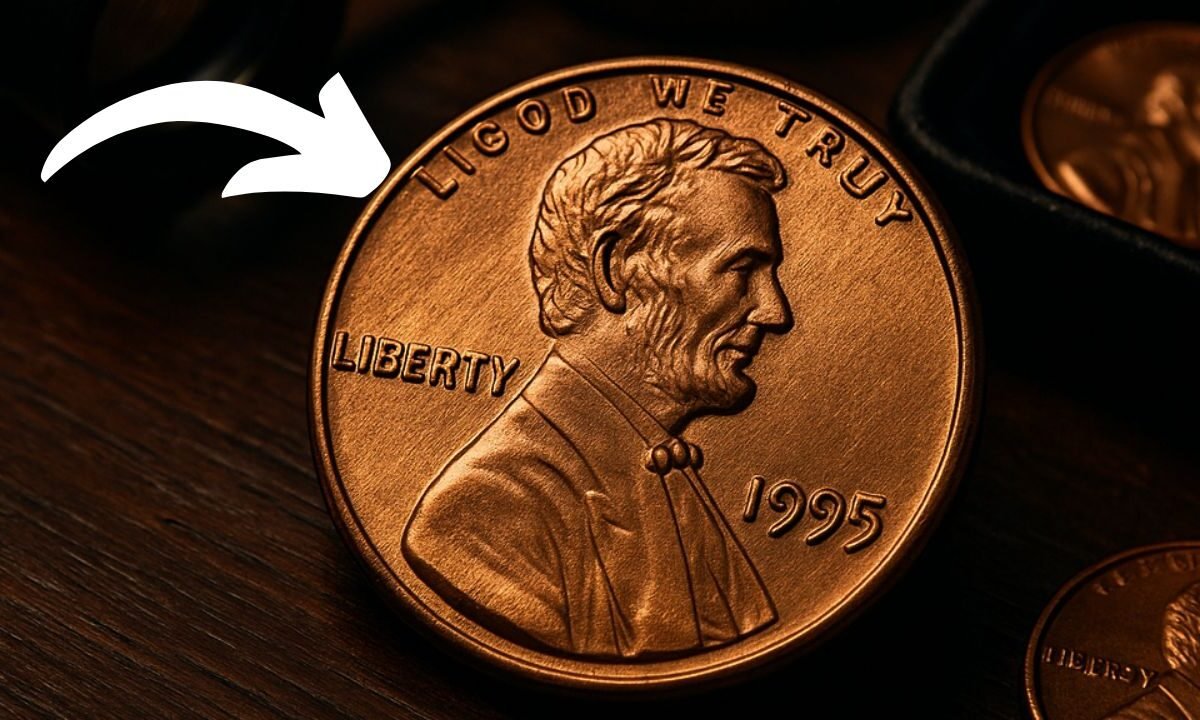The 1995 Doubled Die Lincoln Cent (DDO) is one of the most famous modern U.S. coin errors.
Collectors love it because the doubling is strong and visible without a magnifying glass.
The error happened when the working die was struck twice at slightly different angles during the minting process, creating bold, doubled letters.
The clearest doubling shows on:
- LIBERTY on the left side of the coin.
- The motto IN GOD WE TRUST above Lincoln’s head.
The Truth Behind The “$10,000 Penny”
Many articles call this coin a $10,000 penny, but the reality is different. Only the highest-graded examples in top condition can reach thousands of dollars. In normal cases:
- Circulated coins are worth far less.
- Most uncirculated coins sell for hundreds, not thousands.
- Exceptional “top-pop” coins certified at MS69 Red may reach several thousand dollars at auction.
So, while possible, a $10,000 sale is very rare and should not be expected for average finds.
Mintage And Rarity
- In 1995, the Philadelphia Mint produced over 6.4 billion pennies.
- Out of these, only a fraction carried the doubled die error.
- This makes the coin scarce in high grade, but still findable in circulation and old rolls.
Market Value Today
The table below shows how much the 1995 Doubled Die Lincoln Cent typically sells for depending on condition and grade.
| Grade / Condition | Average Value Range | Notes |
|---|---|---|
| Circulated (XF–AU) | $10 – $50 | Doubling visible but coin shows wear. |
| MS63 – MS66 Red | $25 – $150 | Common certified range, nice luster. |
| MS67 Red | $75 – $250 | Premium for higher quality strike. |
| MS68 Red | $200 – $750 | Much scarcer, collector demand strong. |
| MS69 Red (Top Pop) | $2,000 – $5,000+ | Rare; a few have sold for several thousand dollars. |
How To Identify The Real Doubled Die
To avoid confusion with worthless “machine doubling,” look for these signs:
- LIBERTY: Bold, spread-out doubling on all letters.
- IN GOD WE TRUST: Extra impressions, especially on the letters “G,” “O,” and “T.”
- Sharp, Rounded Images: Real hub doubling looks like a second layer of raised design, not flat or shelf-like.
- No Mintmark: The main variety is from Philadelphia (no “D” mintmark). Minor doubled dies exist from Denver but are less valuable.
Why Collectors Love It
- Affordable entry point: Many collectors can own one in lower grades.
- Visible error: Unlike subtle varieties, this one is easy to spot.
- Investment potential: Top-grade examples continue to draw attention at auctions.
- Historical value: It represents one of the last major doubled dies of the 20th century.
The 1995 Doubled Die Lincoln Cent is a real treasure in U.S. coin collecting.
While not every coin will make you rich, it’s still a desirable variety worth far more than face value.
Common examples trade for tens or hundreds of dollars, while the finest-known pieces can bring thousands.
If you ever spot strong doubling on LIBERTY and IN GOD WE TRUST, you may be holding one of the most famous pennies of modern times.
FAQs
How can I tell if my 1995 penny is the doubled die?
Look for strong doubling on LIBERTY and IN GOD WE TRUST. The letters will appear doubled and spread apart, not flat or blurry.
Can circulated 1995 doubled die pennies be valuable?
Yes. Even circulated examples often sell for $10–$50, depending on condition and eye appeal.
What is the highest price paid for this coin?
Top-grade examples in MS69 Red have sold for over $5,000, but such coins are extremely rare.

